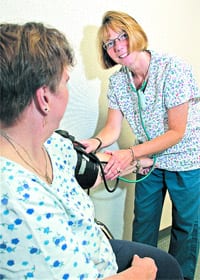Epilepsy Remains Widely Misunderstood
Epilepsy is the third-most-common neurological disorder in the U.S., after Alzheimer’s disease and stroke. Nearly 3 million Americans have the condition, and 200,000 new cases are diagnosed each year, according to the Epilepsy Foundation. Half of all patients are children.
Yet, as widespread as this condition may be, two characteristics perhaps set it apart from others: it’s still somewhat of a mystery in the mind of the public, and the effects of this condition on the patient go far beyond the physical. Here’s some basic information on this disorder.
Epilepsy is characterized by spontaneous, recurrent seizures under conditions that would not normally cause seizures. The seizures are caused by irregular brain activity — excessive excitability of nerve cells in the brain resulting in neurons that fire in an abnormal way.
This abnormal activity affects an individual’s behavior, and that behavior can vary considerably along a spectrum: a person may fall to the ground and shake all over, or just stop and stare. Or there may be some reaction in between. The seizures — which may last from a few seconds to a few minutes and are followed by confusion — can produce involuntary movements, changes in awareness, altered behavior, or loss of consciousness. They can also be life-threatening.
Different types of seizures may occur, depending on which part of the brain and how much of it is affected by the abnormal activity. The origin of the activity may be due to any one of a number of factors, among them head trauma, infections, sleep deprivation, or genetics. And the condition can affect anyone, from newborns to the elderly. A recent study by Columbia University Medical Center in New York, in fact, suggests that older adults are more at risk for developing epilepsy and that more people will develop epilepsy in their lifetime than previously thought.
It’s important to recognize that epilepsy is characterized by spontaneous, recurrent seizures. Up to 10{06cf2b9696b159f874511d23dbc893eb1ac83014175ed30550cfff22781411e5} of the population may experience a seizure sometime in their lives (such as a febrile seizure in infants, caused by fever), but to be epilepsy, spontaneous, recurrent seizures — under conditions that would not normally cause seizures — must be present.
Epilepsy can be difficult to diagnose, as physicians must distinguish the disorder from such conditions as migraine headaches, fainting spells, or transient ischemic attacks, the last of which produce stroke-like symptoms. The first step in diagnosis, and perhaps the most crucial, is compiling an accurate medical history of the patient. That often means getting information from family members or witnesses who can describe the seizures and what the patient actually experienced, because many times the patient will not even know they’ve had a seizure.
The history is then followed by medical tests, which may include an electroencephalogram (a test to detect problems in the electrical activity of the brain) or imaging tests such as an MRI or CT to see what is happening inside the brain and body. Treatment may entail any one of a wide array of anti-convulsant medications (with a careful eye to any side effects the patient may experience), cranial nerve stimulation, special dietary approaches (the ‘ketogenic diet’), or, in some special cases, surgery.
Epilepsy is a major chronic medical condition, similar to arthritis, heart disease, diabetes, or cancer. It can limit activity and cause pain, anxiety, or depression. The impact of epilepsy on the patient, however, goes far beyond the physical. The emotional effects of epilepsy can be substantial, as the disorder can mean problems with memory and learning, stress, depression, and anxiety. Another major issue for epileptic patients is driving, as patients are prohibited from operating a motor vehicle until they can go six months without seizures.
Social stigma and discrimination in workplaces and schools may occur as well, although we have made progress in those areas; our culture today is much more attuned to epilepsy representing a disorder of the brain, much as diabetes is a disorder of the body.
For more information, including how to recognize when someone is having a seizure and the key things to remember when providing first aid for seizures, visit www.epilepsyfoundation.org. For a video discussion on the topic, visit www.physicianfocus.org. v
Dr. Andrew Blum is director of the Comprehensive Epilepsy Program at Rhode Island Hospital in Providence, and Dr. Catherine Phillips is co-director of the Comprehensive Epilepsy Program at UMass Medical Center in Worcester. They are chairman and board member, respectively, of the Epilepsy Foundation of Massachusetts, Rhode Island, New Hampshire, and Maine. This article is a service of the Mass. Medical Society.



Comments are closed.